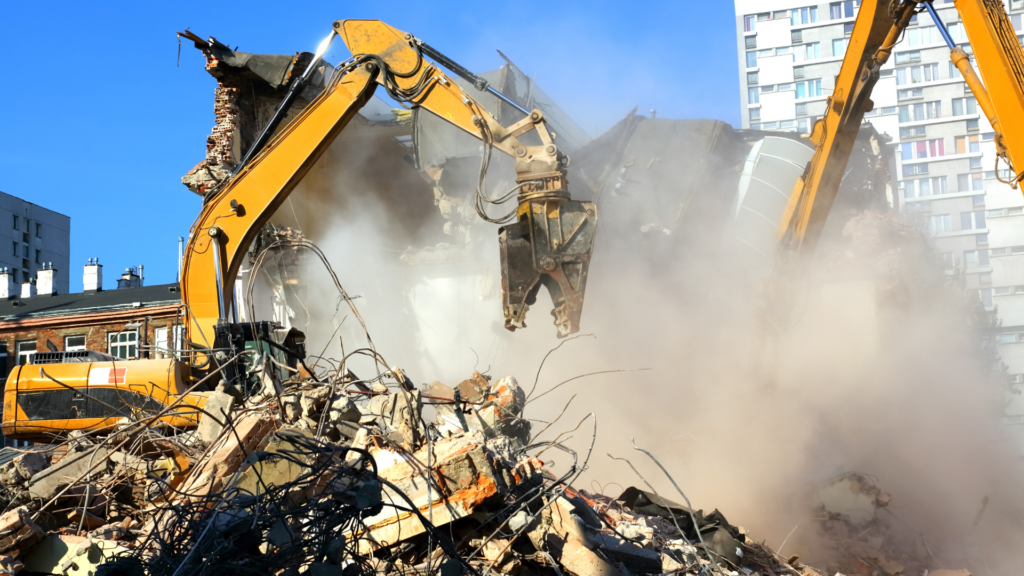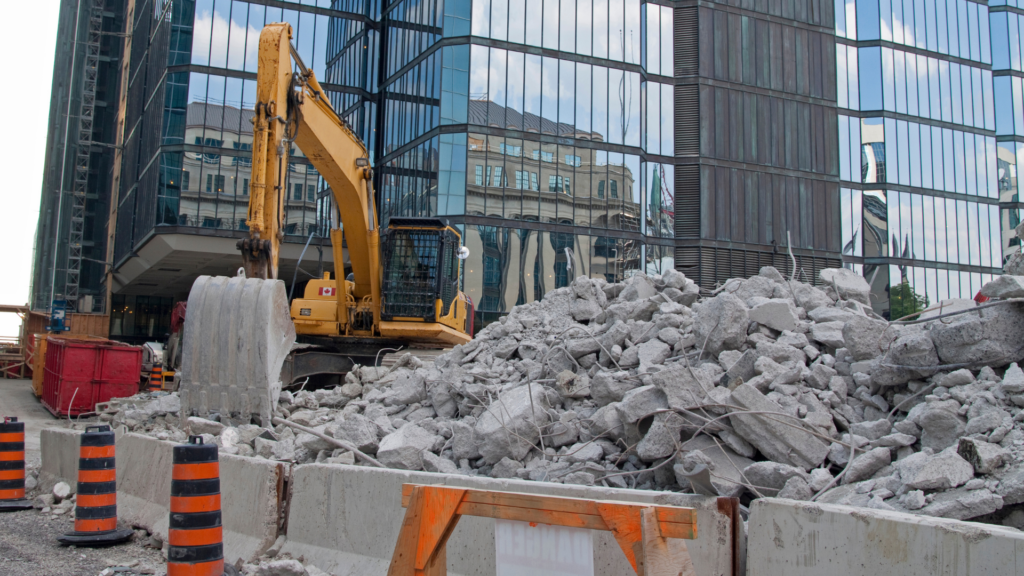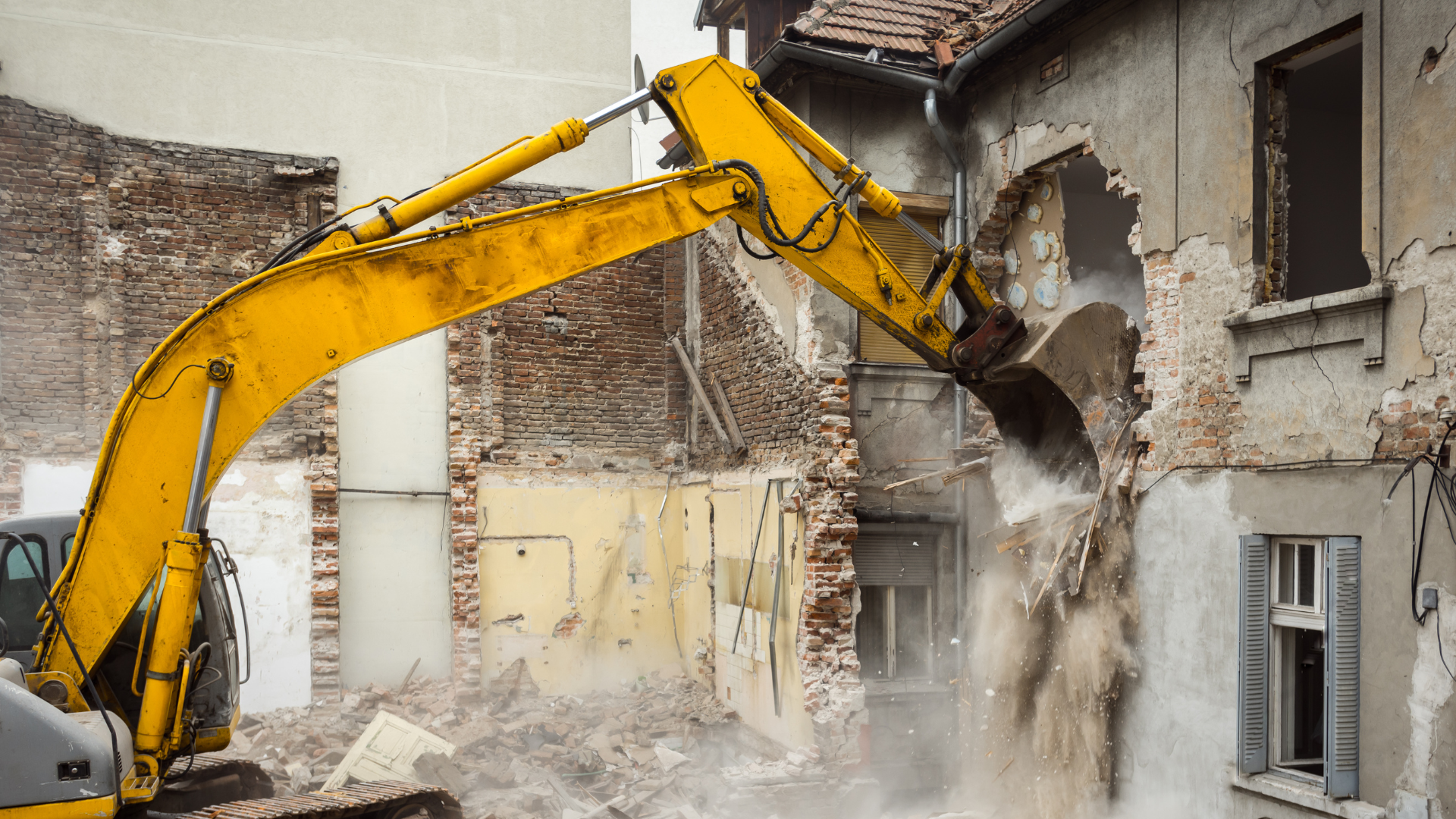In Short
Advice
Are you ready to embark on a thrilling journey that unveils the power of controlled destruction and paves the way for new beginnings? Whether you're an aspiring property developer, a homeowner seeking a fresh start, or simply curious about the intricate world of demolition, this blog post is your ultimate gateway. We'll navigate through the maze of regulations, permits, and safety precautions to empower you with the knowledge and strategies needed to transform structures legally. Join us as we break down the walls of confusion and reveal the secrets of demolishing property in a responsible and efficient manner. Get ready to witness the birth of new opportunities and embrace the excitement of turning dreams into reality. So fasten your seatbelts and prepare to demolish the old to make room for the extraordinary!
What to know about Property Demolition
Demolishing property will require an official permit issued by the relevant authorities in accordance with Section 39. The types of houses and buildings that require demolition permits include:
- Houses or buildings exceeding 50 meters in height, with a distance less than the height of the building from other buildings or public areas.
- Houses or buildings located within a distance of less than 2 meters from other buildings or public areas.
For example, if your house is taller than 15 meters and there are other buildings or a community in close proximity with a distance of less than 15 meters, you would need to apply for a demolition permit as the owner of the property.

However, there are minor renovation and adjustments that do not require the need of formal paperwork provided that such work adheres to appropriate standards. It is important to note that homeowners should still inform the relevant authorities before proceeding. These cases are governed by the Ministry of Interior's Regulations No. 11, issued under the Building Control Act of 1979.
- "Increasing" or "decreasing" the floor area of any single level by a total of no more than 5 square meters, without adding or removing columns or beams. If the area exceeds 5 square meters, a permit must be obtained.
- "Increasing" or "decreasing" the rear area by a total of no more than 5 square meters, without adding or removing columns or beams. If the area exceeds 5 square meters, a permit must be obtained.
- Making structural changes to the building using materials of the same size, quantity, and type as the original ones. If there are changes in the structural materials, a permit must be obtained.
- Changing any parts within the house that are not part of the building's structure, using materials of the same type as the original ones or other materials that do not increase the weight of the original structure by more than 10%. If there are changes using different materials or an increase in weight exceeding 10%, a permit must be obtained.
- Changing, extending, adding, or reducing any area within the house that is not part of the building's structure, without increasing the weight of the structure by more than 10% of the original building's weight. If there are changes, extensions, additions, or reductions using materials different from the original ones or an increase in weight exceeding 10%, a permit must be obtained.
Legally Demolishing Property

Documents Required

Applicants seeking a demolition permit must prepare necessary documents for submission to the district office or local governing body responsible for the area where the demolition will take place. The required documents include:
- House Plans, which should consist of:
- Floor plans for each floor.
- 2 elevation diagrams.
- 2 cross-section diagrams.
- Bill of Quantities, covering the entire process of demolition, including a detailed breakdown of the materials to be used, ensuring completeness according to the principles of building demolition.
2. Kor.1(ข.1) Application Form.
3. Copy of Identification Card and copy of House Registration of the applicant.
4. Landowner's Consent Letter (used when the applicant is not the owner of the land).
5. Landowner's Identification Card.
6. Copy or photograph of the actual Land Title Deed (Chanote)
7. Documents related to engineers and architects:
- Letter of Consent and Certification from the engineer and architect.
- Copy of Professional License of the engineer and architect.
- Letter of Consent and Certification from the Work Supervisor of the engineer and architect.
- Copy of the professional license of the Work Supervisor.
8. Other Documents:
- Wastewater Treatment System Presentation.
- Calculation list for wastewater treatment system.
*In cases where the demolition involves industrial factories, markets, restaurants, accommodations, or hospitals.
Once all the necessary documents are prepared and complete for the permit application, the applicant can proceed to submit them to the relevant authorities. The applicant is required to pay the application fee on the day of submission. The authorities will then review all the documents and process the issuance of the demolition permit for the applicant.
The Demolition

After obtaining the demolition permit from the authorities, the applicant can proceed with the actual demolition process. The following preparations need to be made:
- Display project signage for the demolition, providing complete details as required by the Building Control Act.
- Deliver the construction permit along with the relevant plans to the construction site for demolition.
- Specify the start and end dates of the demolition, the work supervisor, and provide a letter of consent from the work supervisor to the district office or local governing body for further documentation.
Penalties for Unauthorized Property Demolition

Engaging in demolition activities without obtaining the required permit or failing to adhere to the conditions specified in the demolition permit can result in legal violations. Offenders may face serious consequences, including imprisonment for up to 3 months, a hefty fine of up to 60,000 Baht, or both. Furthermore, a daily fine of up to 10,000 Baht can be imposed for each day of non-compliance with the regulations outlined in the demolition permit. It is crucial to understand and abide by the legal requirements to ensure a smooth and lawful demolition process.
Moreover, in cases where the demolition is not rectified according to the permit requirements or if the homeowner refuses to address the issues, the authorities have the power to issue an order for the complete demolition of the house or building. Non-compliance with such orders can lead to further penalties, such as imprisonment for up to 6 months, a substantial fine of up to 100,000 Baht, or both. Additionally, a daily fine of up to 30,000 Baht may be imposed until the necessary rectifications are made. It is crucial to prioritize compliance with regulations to avoid severe consequences and ensure a smooth demolition process.
Property Demolition Fees and Expenses
When it comes to demolishing a house or building, the cost typically falls within the range of 5,000 to 30,000 Baht. However, keep in mind that the actual expenses can vary depending on factors such as the property's size and the complexity of the demolition process. If you're planning for design or remodeling aspects, additional costs may apply based on the standard rates set by the esteemed Association of Siamese Architects under the Royal Patronage. The following rates cover specific elements of interior design and decoration:
- The design fee for residential houses with a budget of no more than 10 million Baht is typically calculated at 7.5% of the budget.
- The design fee for interior decoration with a budget of no more than 10 million Baht is typically calculated at 10% of the budget.
Good luck with your Property Demolition!
Congratulations! You've reached the end of our comprehensive guide to legally demolishing property. Armed with knowledge about permits, documentation, and the necessary steps, you're well-equipped to embark on your demolition journey with confidence. Remember, it's crucial to follow the rules and regulations, ensuring a smooth and lawful process. Whether you're bidding farewell to an old structure or making way for new beginnings, embracing the power of controlled destruction opens doors to endless possibilities. So go forth, unleash your inner demolisher, and witness the transformation that awaits. Good luck with your property demolition adventure, and may your vision for the future rise from the rubble, bigger and better than ever!
Looking for an ideal property for the best prices possible? Check out our expansive selection of properties available both for sale and rent today!
FAQs
Lorem ipsum dolor sit amet, consectetur adipiscing elit. Suspendisse varius enim in eros elementum tristique.
Explore More Topics
Free real estate resources and tips on how to capitalise



